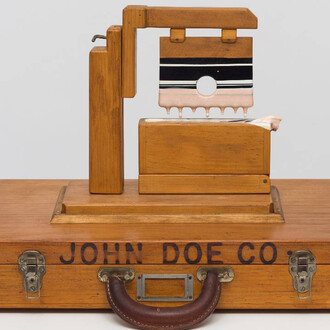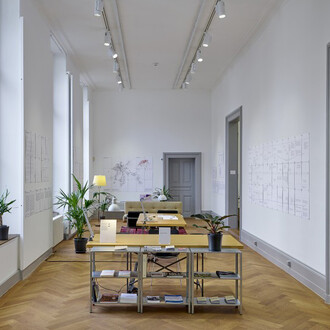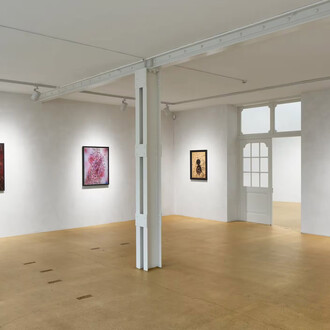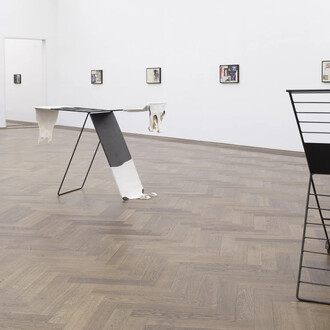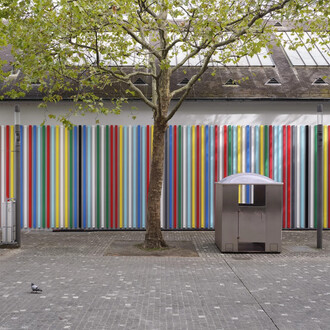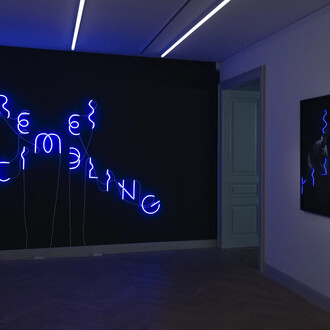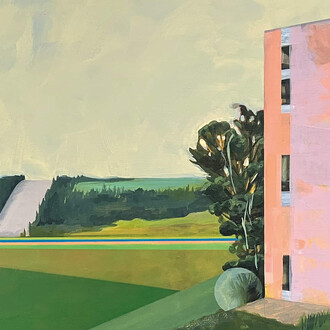Len Lye (1901–1980), born in Christchurch, New Zealand, was one of the most important experimental film-makers of the 1930s to 1950s, and in his later years created a fascinating, multidisciplinary body of work, large parts of which have yet to be fully explored. Being self-taught, he soon developed a highly idiosyncratic approach to art.
After living in Wellington for a while, Lye spent 1923–26 in Sydney, where he studied the art of the indigenous peoples of Samoa, New Guinea and Africa, Aboriginal Australian and the Maori familiar to him from his native New Zealand, recording what he saw in sketchbooks. These not only juxtapose drawings of masks and ornaments from different cultures with works of the Russian Constructivists and Henri Gaudier-Brzeska, but in one of the books in this visual compendium flank them with a transcription of Sigmund Freud’s essay Totem and Taboo (first published in German in 1913, and in Abraham Brill’s English translation in 1918), as well as texts by and about Gaudier-Brzeska (published in an anthology by Ezra Pound in 1916) and by Oskar Pfister (Expressionism in Art, published in English in 1922).
Lye worked as a film-maker for the British post office and other governmental commercial organisations and made commercial films of great artistic merit. Just as he believed there to be no barriers between cultures, between «Western» and «primitive» art, so, to his mind, there was no distinction to be drawn between «high-brow» and «low-brow» culture.
Even early on in his career, Lye was anxious to broaden the reception of his films, which as commercials were to be screened in cinemas, too. The idea of television fascinated him, and he pondered the question of how music might be visualised on colour television in a text written as early as 1939! He also made films to accompany specific pieces of music and always took as much care with his soundtracks as with his films. It is therefore not by chance that the TV channel MTV has hailed Len Lye as the father of the music video.
Len Lye lived in New York City from 1944 until his death in 1980. In the late 1950s, finding it increasingly difficult to market his films commercially, he turned to kinetic sculpture and created a series of sculptures that he would continue working on right up to his death, playing through ever new variations in size, material and use. They were intended as much for museums as for amusement parks, cultural barriers being non-existent for Lye.
In addition to his sculptures and films, he also produced paintings, photograms, drawings, photographs or audio tapes. Lye, in other words, worked in all the media that he could lay his hands on, always taking a spontaneous and highly idiosyncratic approach. At the same time, he wrote texts for both publications and lectures in which he reflected on what he was doing.
The aim of this project is to take the unique status of Lye’s filmic oeuvre as a starting point for an exploration of the full breadth of his output in a range of media and media combinations. Len Lye’s ‘unprejudiced’ view of the cultures of this world will also be subjected to critical scrutiny.
For the research and critical inquiry demanded by the project we will be able to draw on the archive of the Len Lye Centre in New Plymouth , which houses many as yet unpublished documents and works of his, and on the collaboration and input of scholars and cultural historians specialised in the relevant fields. Since Lye’s early preoccupation with psychoanalytical texts also warrants critical reading, textual criticism and the cross-fertilisation of both theoretical and practical work will be of immense importance to the project – not least to the catalogue.
Some 18 films (among them some made during the war as well as several commercial films) are to be screened as far as possible in their entirety as digital projections or screenings.
Three original sculptures that are currently housed in various museums in the USA have in some instances been be restored by the Len Lye Foundation. They form another highlight of the show. To demonstrate the kinetic principle, we will at any rate have recourse to more recent «reconstructions» built by the Foundation.





